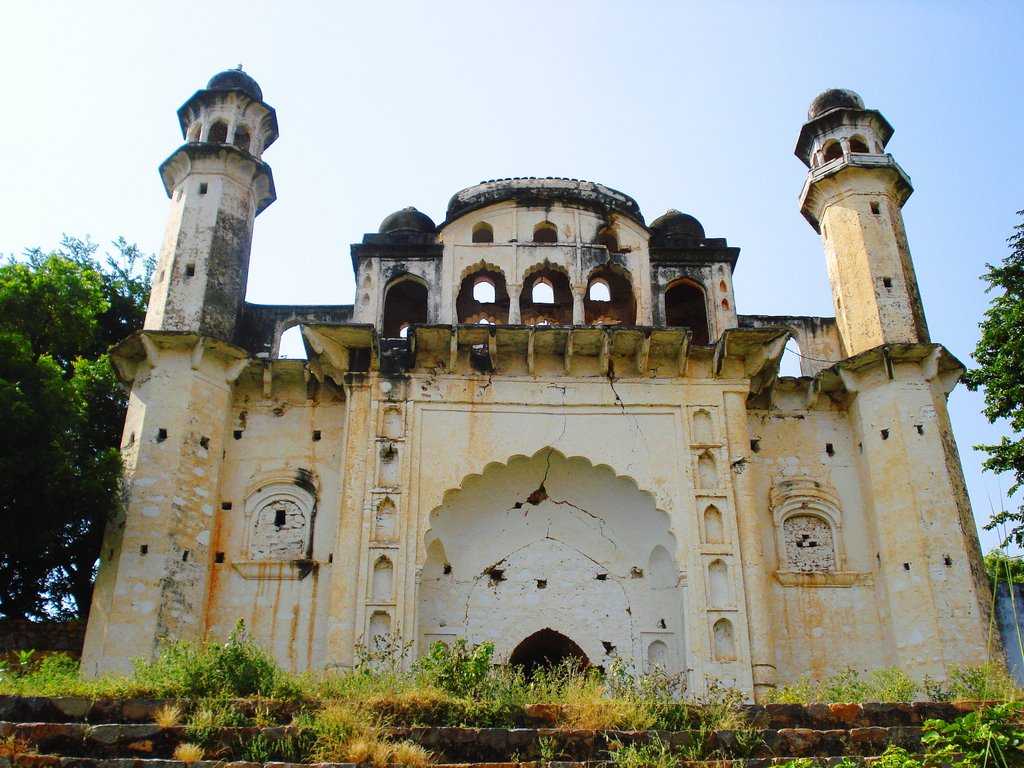Nuh has been in headlines recently and likely to be the topics of discussion in media. Nuh, which is a district headquarter of Mewat district, which is now Nuh district is a region, significant in Indian Muslims point of view.
The Muslim history of Mewat region dates several centuries back. Sonpar Pal, a member of Jadu Clan embraced Islam in 1555. Now known as Raja Bahadur Nahar Khan, Sonpar Pal constructed Kotla Bahadur Nagar Fort near Kotla Lake at Kotla village in Nuh. This title was conferred to him by Sultan Firoz Shah Tughlaq. Khandzada Rajputs trace their lineage to him.
After the fall of Tughlaq dynasty in 1398, Nahar Khan reconciled with Timur. In 1420, during the era of Nahar Khan’s grandson, Khanzada Feroz Khan, Mewat was attacked by Sultan Khizr Khan of Delhi Sayyid dynasty. The Mewati army fortified themselves for one year in Kotla Fort, after which the Delhi army retreated. In 1425, great-grandsons of Bahadur Nahar, named Khanzada Jalal Khan and Khanzada Abdul Qadir Khan (Jallu and Qaddu) revolted against Delhi Sultanate but were defeated by Delhi Sultan Mubarak Shah ( 1421– 1434 CE) who overran Mewat and killed Qaddu. Jallu continued the native Mewati rebellion against the Delhi sultanate. In 1427, the Mewati army fortified themselves for one year in the hills of Tijara, after which the Delhi army retreated. In 1527, Hasan Khan Mewati, a descendant of Raja Nahar Khan, sided with the Rajput king Rana Sanga and they were defeated by Babur at Battle of Khanwa where Hassan Khan Mewati was killed by the Mughals and his son Nahar Khan II ruled Mewat as a vassal of the Mughals.
Hasan Khan Mewati is revered by Hindus and one medical college has been established in his name “Shaheed Hasan Khan Mewati Government Medical College. It is situated on the outskirts of Nuh in Nalhar in Nuh District of Haryana state in India.
Aurangzeb sent Jai Singh I to crush the revolting Khanzada chief Ikram Khan, Jagir of Tijara a descendant of Raja Nahar Khan (through his son Malik Alaudin Khan). After the death of Aurangzeb, Bahadurgarh and Farrukhnagar in the north were under the Baloch Nawab, who were granted jagir in 1713 CE by Mughal king Farrukhsiyar; the central area of Badshapur was under Hindu Badgurjar king Hathi Singh and the south including Nuh were under the Jat king of Bharatpur State, Maharaja Suraj Mal. During the Maratha Empire the area was conquered by French generals in late 18th century and they granted Farukhnagar to George Thomas and Jharsa (Badshahpur) to Begum Sumro; the south area including Nuh remained under the Bharatpur Jat Kings and their vassal relatives, one of whom was Nahar Singh.
Nuh, which falls within Mewat region, has witnessed Islamic revival by Tablighi Jamaat and a great number of its inhabitants are actively participants in this conservative organization. However, due to its efforts and Islami zeal, Islamic institutions and historical monuments are found here at many places.
We pray the recent turmoil and disturbances in the area would come to an end by the Grace of God and attempts of peace loving citizens of India, who want to see their country a leading power in the world.
Hamid Siddiqui







Leave a Reply